Last night, Carroll Gardens and Gowanus residents who attended a Community Workshop on the future of Public Place were given a map of the site, pretty cut out pictures to help people decide what the buildings should look like and what public amenities should be included, and wooden blocks to build their very own residential high rises. However, they were not given the most important information needed to realistically plan for the future of this six acre City-owned lot: that the site is currently dangerously polluted and that even after environmental remediation, it may be too hazardous to safely house families on Public Place.
Neither Councilmember Brad Lander, nor representatives of NYC Department of Housing Preservation and Development or NYC Department of City Planning, who jointly hosted the workshop at PS32, mentioned to the public last night that coal tar on Public Place has been found at depths of 150 feet, that it can never be removed entirely, that recovery wells will be needed long after remediation to continue to collect the oozing tar, and that the groundwater has been proven to be contaminated.
Yes, the public has certainly become more informed about environmental issues in the Gowanus area in the past few years, but Public Place has the distinction of being one of, if not the most polluted site in the entire area. That certainly deserves a mention, one would think.
The responsibility for the clean-up falls on National Grid. Work will be done under the supervision of NYS Department of Environmental Conservation.
Since some of the coal tar has been found to ooze from the site into the Gowanus Canal, the US Environmental Protection Agency, which declared the canal a Superfund site in 2010, is also involved.
The workshop was part of an effort by the City of New York to revive the 2008 "'Gowanus Green'" development project for Public Place. You may remember that in 2008, Hudson Companies, Jonathan Rose, Fifth Avenue Committee, and the Bluestone Organization were selected to develop the site for affordable housing with retail space, community facilities and open space. Their proposal included 770 units of housing, 75% of which were slated to be affordable. To move forward, the site needed to go through a rezoning from manufacturing to residential, which never moved forward after the Environmental Protection Agency declared the Gowanus Canal a Superfund Site.
However, the NYC Department of City Planning has now wrapped Public Place into the framework of the agency's Gowanus Neighborhood Planning Study. The rezoning is likely going to move forward early next year as it goes through the Uniform Land Use Process (ULURP).
Councilman Brad Lander explained last night that Hudson Companies, Jonathan Rose, Fifth Avenue Committee, and the Bluestone Organization are still on board. However, the City is now planning to make all units on Public Place affordable. The project, he told local residents, will include 2 1/2 acres of open space. The plans also call for a new school. The workshop, Lander felt, was "an exciting opportunity to think together about how we can make this a really great place in the center of the Gowanus neighborhood."
At about a dozen tables, local residents were then prompted to create that vision, with photos of happy families, nice plantings, schools, performance spaces and playgrounds, which they placed around the footprint of Public Place. Then, as if on cue, representatives from NYC Department of Housing Preservation and Development and NYC Department of City Planning placed wooden blocks on each table. Each block represented 6 stories of a building. Members of the public were encouraged to stack them up to indicate the building height and density with which they felt comfortable.
At one table, participants envisioned a 60 story building, while at another, participants felt that they just did not have enough information to make that decision. "What if we don't want any housing on the site, " someone at table #4 said. "Is that even an option?"
Of course that is or should be an option. Those 6 acres are our public land. EVERYTHING should be on the table, from the original community wish to turn Public Place into ball fields, to restoring it to wetlands to mitigate flooding in the area, to building affordable housing.
However, if the community decides that housing is the way to go, it is imperative that we understand the environmental challenges associated with Public Place. That means we need to have National Grid and EPA in the room to explain what we can expect after a clean-up. We need to know who will be liable if people living on the site do get exposed to toxins in the future.
Those are far more important discussions to have now. Stacking blocks and moving pretty photos around a map is premature if our politicians and city agencies refuse to even acknowledge that Public Place may just be too dangerous for housing.
Perhaps they would do well to reach back into the past. In 1984, a New York City Partnership withdrew its proposal to build moderate income housing on the site "because of serious environmental problems and exorbitant costs associated with developing the lot."
See below:


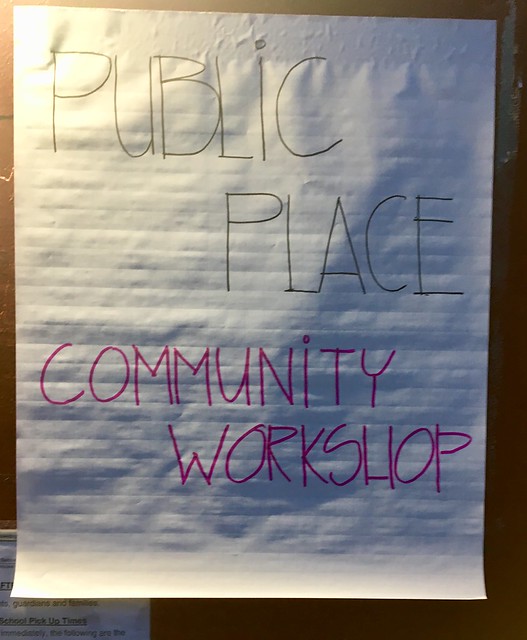
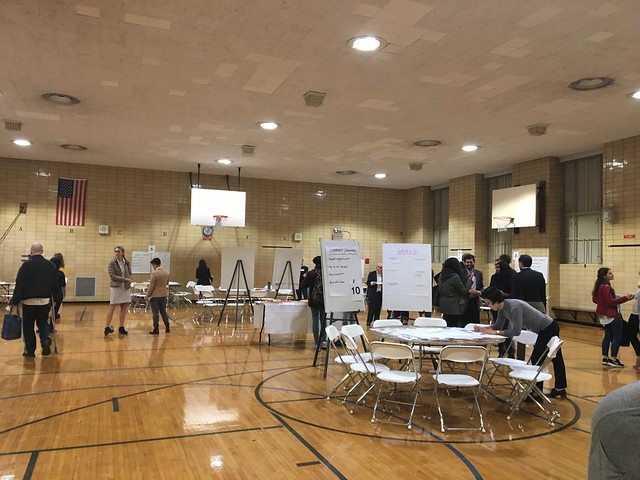

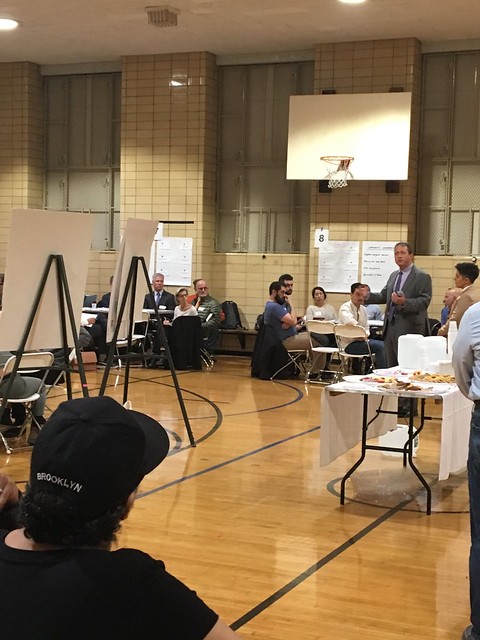

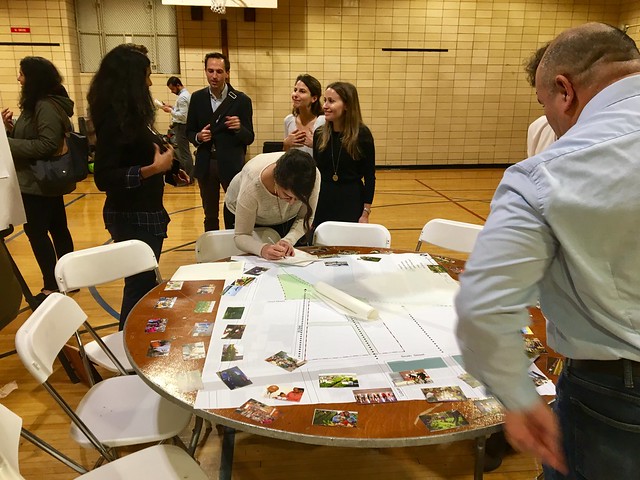
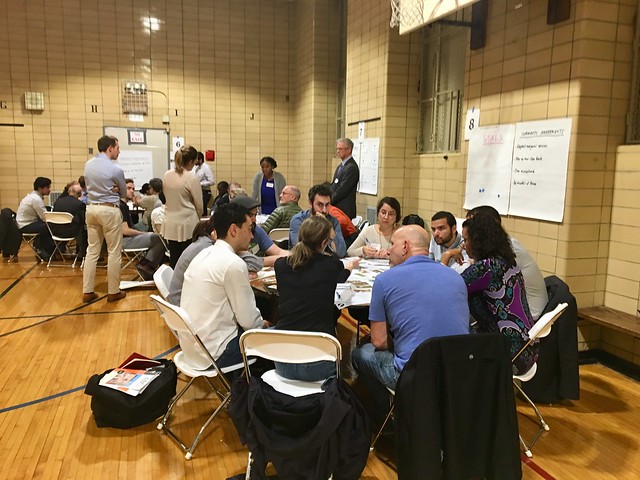
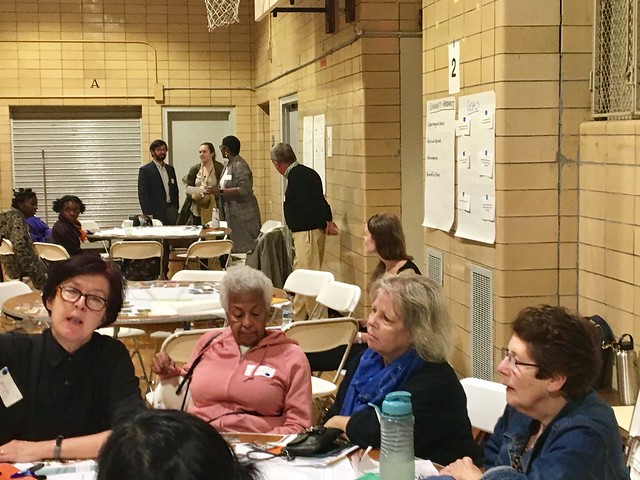
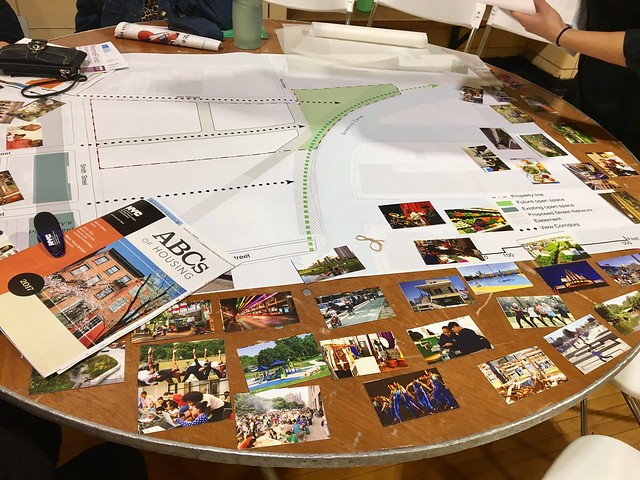

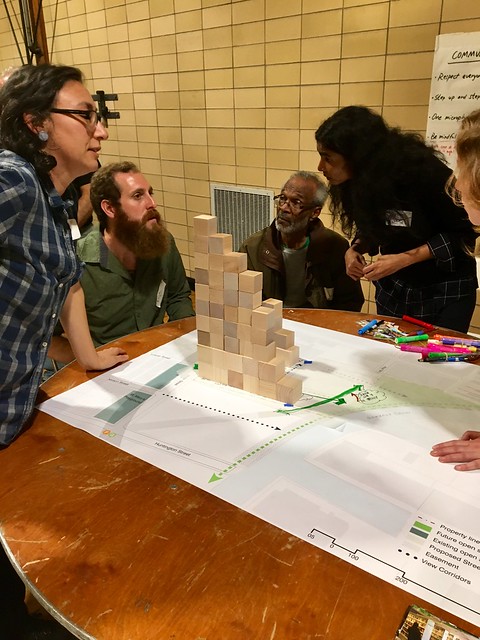
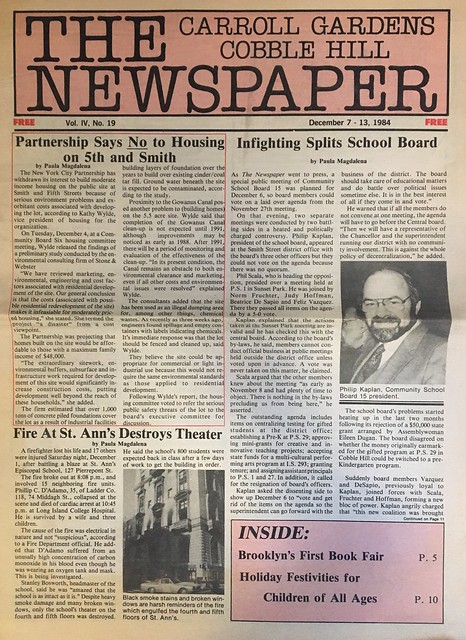
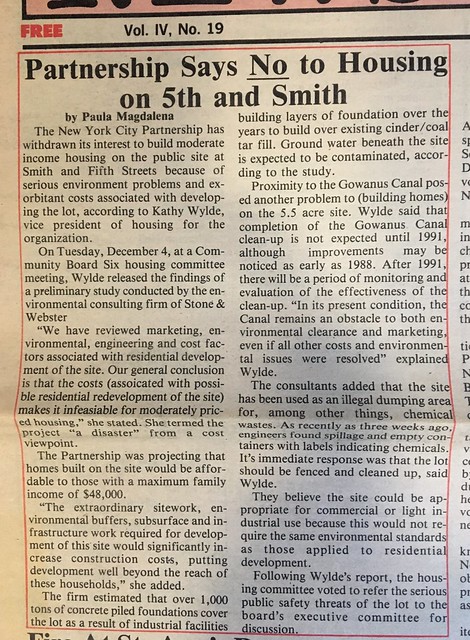
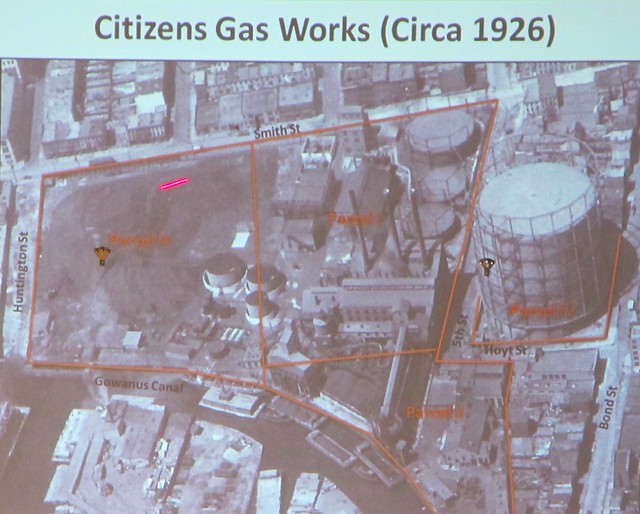






.JPG)

10 comments:
It is not true visioning when you are told what you have to envision - the parameters for visioning HAD to include buildings. And why only affordable housing now? Because the site is a dangerous one that will need to be monitored forever for its toxicity. Affordable housing becomes second class housing. This is all wrong - thank you for the historic background. It was always wrong to build housing on this site!
Here we go again. Another Top Down "envisioning" charade. Please give me a break. Where have we seen this dog and pony before? I have seen this movie too too many times. Enough already!
Toxic Place (Public Place) is TOXIC TOXIC TOXIC!
Public Place is Putrid Place. Public Place is FULL OF COAL TAR!
I would not house my dog there let alone my family.
Cancer is caused by the very same chemicals that lie in the ground. And we know they lie in the ground cause we tested and found them there.
And we know it's the ground because duhhhh
We already KNOW the risks and know the DNAGERS!
But I guess the Powers that be (I see you Brad!) and all the others want to debate real science )(again) and talk about putting some MORE! some people in harm's way.
Again.
Putting public affordable housing there is a CRIME!
It does not matter how rich or how poor the unfortunate people are that land in one of those houses. They may get very sick and then who will they sue? Not the "LLC" cause it can't be sued. Not the City cause they will hide all the relevant data. The EPA? Nope cause they already told us it was toxic and to BEWARE.
Damn how low must we go for the almighty dollar?
BUYER BEWARE!
Greetings Katia,
Excellent reporting and background.
What a crock! I agree with anonymous 5:27pm. Affordable housing to shut folks up by saying “look, I’m for affordable housing, see?” Yeah, sure, they will monitor it - not. I do wonder though. It must be far worse than the area with 365 Bond and Whole Foods or else they would build market rate housing no? Still shaking my head at the pretty pictures and letting the community envision. What a crock!
Great article, particularly the summary of historical information which I think, even to this day, most folks in the neighborhood know very little about. Old aerial pic is amazing. I live in the general vicinity and I’ve always thought that just about anything would be better than the empty lot / cement mixing plant, and that was before the mountain of broken concrete began to grow toward the sky (“Mt. Crumbly” as we call it in our household). After reading this and the one post above, it does seem absurd that our local government endeavors to deem the site livable for renters or even a school! Ha! Sure; “Daddy, why do i have to shower every day when i get home from class?” —“Sweetie, we just need to wash the polycyclic aromatic hydrocarbons out of your hair. You don’t want tar warts again, do you?” Kinda feels like a simple park, dog run, ball field, maybe a bike lane along the gowan, and some marsh/sponge park landscaping might be the sensible thing to do. And just move on to the next one...
PS: check out what they did in a similar situation in Seattle on Lake Union: https://en.m.wikipedia.org/wiki/Gas_Works_Park — It was also a manufactured gas site. Now it is a really nice place. No one is bummed they passed on the oppt’y to throw up a 60 story super tall!
Shame on the city for not informing the public especially those in the housing projects that this new Public Place has the largest coal tar in the Gowanus Canal and it practically is a dump waste. I have seen from the F train truckloads of oil cans buried in that area many years ago. Even Ferrari cement factory is located near there. Supposedly National Grid should clean up the area completely so that new occupants of low-income families can remain healthy. Instead, why not build a hospital for the sick people living along the Superfund Canal.
Please don't take this as a personal attack, but this type of viewpoint is offensive, racist, and downright regressive.
To sum up your thoughts: "yes, many families in need may get help and a toxic site may be cleaned up, but what do I get out of it?"
Guess what, maybe the people who live here don't get ANYTHING out of it: ballfields, open space, a flood buffer, anything. And instead, some non-rich, non-white folks get a place to live.
I know which side of that I fall down on.
Public Place is a severely contaminated piece of property. I am not a chemist, scientist or chemical engineer, but I do listen to those who are the experts in those fields when they speak and I have learned a great deal about Polycyclic Aromatic Hydrocarbons (PAHs) and what a serious danger they present to public health and safety. Public Place sits upon an ocean of coal tar and therefore an ocean of PAHs. That property is not just contaminated now. Despite the wells, the bulkheads, despite the upland cleanup, it will remain contaminated in perpetuity.
Besides all of the scientific information I have learned from the EPA, DEC, DEP, Army Corp of Engineers, Health Department and others, I have both read and listened to Patricia Culligan, a chemist and environmental scientist from Columbia University who had spent a great deal of time studying the contamination in Gowanus resulting from the manufactured gas plants.
Ms Culligan has spoken about the dangers of the vapors emitted by those underground PAHs and how enclosing them, for example, in buildings, would increase the hazards they present.
The housing that is being discussed for Public Place will require foundations. I am neither an architect nor building engineer but I do know that foundations must be put into the ground. The current plan to prevent further contamination of the land as well as to prevent contact between the residents and the lurking coal tar and its vapors, is to basically lay down plastic between the dirt that is removed from the top of the property and the few feet of new dirt that will be added in its place.
Seems to me that holes will have to be made in that plastic in order to put in the deep foundations necessary to guarantee structural stability for those residences.Think about that. Yes you can make a hole and put some filler around it--but if you have ever had a problem with a leaky roof, you know that water (and in this case, most certainly, vapors) can always manage to find a way once an opening has been made. Combining the opening for the underground vapors to be released into the enclosed buildings seems like a serious health problem just waiting to happen.
I do not know, no one knows what or to what extent those health problems could be. That is precisely the problem.
Yes, there are other buildings that have been built upon former mgp plants. The Gehry building on West Street in Manhattan is always trotted out as a fine example of recovering and transforming contaminated property into usefulness. But that IAC building is a commercial building. People do not live or sleep there. Babies and little children do not grow there. The frailer elderly and homebound do not spend all of their time there.
I do not know how many residential complexes have been built in NYC on top of former mgp sites. I do not recall attending any meetings where this information was shared with the community, I do not know the extent of the contamination on any of these other residential sites nor the methods that may have been employed to safeguard the residents who may live there from it. It would be of great help to have that type of detailed information along with any ongoing health studies pertaining to those living there. But until I have that type of information, I must rely on the facts I do have,
What I do know is that Public Place is one of, if not the single most contaminated former mgp site in the country. PAHs emit vapors that are a danger to public health and safety. It is of scientific opinion that enclosing those vapors makes them even more dangerous. Therefore, I see no reason to encourage or applaud any type of structure designed as residential housing on that site.
I found it very curious that the original proposed project was to be about 700 mostly affordable housing with some market rate apartments available and it is now more in the neighborhood of 1000 apartments and 100% affordable only.
Could it be that the apartments of Public Place will act as the means for the Gowanus Green developers to qualify for assorted financial breaks on perhaps another, perhaps luxury (rezoned) Gowanus site because Public Place provides a required affordable housing component--albeit an "off site" one?
Could it be that we are all being sold the biggest most contaminated Bill of Goods since Love Canal?
Could this be the reason people who do not have the courage to sign their name resort to horrible and undeserved name calling of others?
Things like ballfields, open air space, flood buffers, open air learning centers and open air art space are not dirty or shameful words. They are not, exclusive to one group, kind of words. They are words that represent things that everyone can use and enjoy and even need.
Public Place presents a unique opportunity as a monument to Brooklyn and NYC history. Beginning with Native American and Dutch colonies, to present day. It is a living timeline bearing witness to early agricultural/fishing use, the industrial revolution all the way to today's modern technological advances. It exposes the many terrible environmental mistakes made and the ambitious resolution, perseverance and ingenuity in trying to rectify some of those mistakes.
I choose, as you say, to fall down on the side of science, fact and common sense. Any type of housing on Public Place in my opinion, is just not wise. That is not an offensive, racist or regressive stance. It is a concerned and thoughtful conclusion.
Rita,
What did the EPA say at the meeting about site occupancy post-cleanup?
Wouldn't the site need to be cleaned in accordance with NYS brownfield remediation required for housing uses? I can't understand how cleanup for a park or cleanup for an office is acceptable but cleanup for housing of any kind is not acceptable.
Isn't this just NIBMY against new residents and NOT about public safety? The Logic doesn't add up.
Dear Anonymous-- (wouldn't it be better if I knew your name as you know mine?)
It is my opinion that the Public Place site is unsuitable for any type of enclosed structure. I did not say it should be used for office space. I mentioned that the building that is always brought up as a successful cleanup of an mgp is actually used as office space, not residential housing.
The types of things I mentioned as possible uses, if you were reading carefully, were all open air suggestions-nothing that would permit dangerous vapors to be trapped within enclosed spaces.
I would suggest that you read as much as you can about the site, about its history, about its severe contamination. Then read all that you can find and listen to all of the parties involved. Attend the CAG meetings - they are open to the public and held monthly ten months out of the year. Understand exactly what the cleanup and development plans are.
After you have thought about that --- really thought about all of that, ask yourself, as I did---Would you really truly want your parent, grandparent, wife, husband, children to live, eat, play and sleep in an enclosed structure on that site? Would you feel comfortable living on that site once you have learned all that you could about it?
When you have an answer-- that will be a well thought out, concerned opinion-- Perhaps you will find that you agree with me. Perhaps you will not. But either way, I would certainly listen to your opinion and how and why you reached it without any preconceived notions other than that you cared enough to invest the time to reach it.
Post a Comment